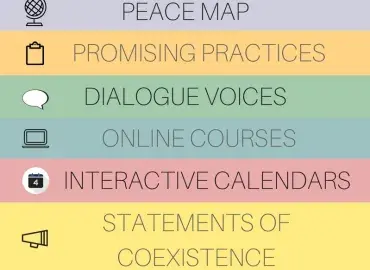The last few decades have seen exponential growth in the number of organisations using interreligious dialogue to solve the world‘s problems. In fact, a large number of these organisations were founded between 2000-2012, a decade that also saw an exponential increase in violence by people manipulating religion as a justification for their actions.
But interreligious dialogue is not a new phenomenon, nor is it related to conflict alone. In fact, by some standards, the first organisation to “use” interreligious dialogue was founded in the 1600s! And by any standard, organisations furthering interreligious dialogue have been around since well before the 1900s.
Today, there are thousands of such organizations around the world, using interreligious dialogue to address a diverse range of issues, such as human rights, justice, gender, health, education, and conflict. They work at the grassroots level, with specific communities, and across countries and even globally.
For some time now, in fact, since its founding in 2012, KAICIID has been working on a tool that could connect these organizations to each other, and with the larger policy making and development community. A tool that researchers, students and the general public can use to better understand this exciting field, and the benefits it offers.
The KAICIID Peace Map is the result of months of research by the KAICIID Research team, and their collaborators, the International Peace Institute, the Harvard Pluralism Project, and the Coexister Interfaith Tour. In its first phase, we provide you with information on more than 400 organisations that are doing interreligious dialogue internationally.. Based upon websites in Arabic, Chinese/Mandarin, English, French, German, Hindi, Portuguese, Russian, or Spanish, the IRD-Directory includes organizations from all continents. The website is designed to help users find organisations by region, and by area of expertise, and to demonstrate interlinkages between them, where they exist. Use the Peace Factors and Thematic Maps to assess the contexts in which these organisations are active.
Finally, the Dialogue Voices provide a space for interreligious dialogue practitioners around the world to present their work, in their own words.
We hope that the Peace Map will help close the gaps that exist between the many practitioners on the ground and a variety of other organizations at all levels. We hope policy makers, such as the world leaders meeting at the United Nations General Assembly this week, will use the platform to include interreligious dialogue in their toolkit to achieve sustainable development and conflict resolution.
We will continue to add more organizations to the Peace Map, so please check back frequently. We will also add more granular data on the national and local level, and analyses on interreligious dialogue activities in their socio-cultural context.
We want the PMP to become one of the places to better understand how IRD contributes to “glocal” dynamics on a global scale – not just by providing concise and accurate data but also by helping people to form their own opinions based on this data.
We hope you will visit the Peace Map, share it with your colleagues, add your own organisations to the database, and most importantly, let us know what improvements you would like us to make so it can serve you, as professionals interested in interreligious dialogue, better!
As world leaders prepare to adopt the “2030 Agenda for Sustainable Development” at a 25-27 September Ministerial Summit in New…
The International Dialogue Centre (KAICIID) today launched an online database of…
Conventional wisdom says that the field of interreligious dialogue (IRD) is static and ritualized. The KAICIID peace map…

![[file:field-file-image-alt-text]](/sites/default/files/styles/features_940_630/public/img_2750.jpg.webp?itok=yMjGlbO5)


![pmp_screenshot_4 [file:field-file-image-alt-text]](/sites/default/files/styles/cards_360_270_scale_crop/public/pmp_screenshot_4.jpg.webp?h=d1cb525d&itok=36wbAnT5)